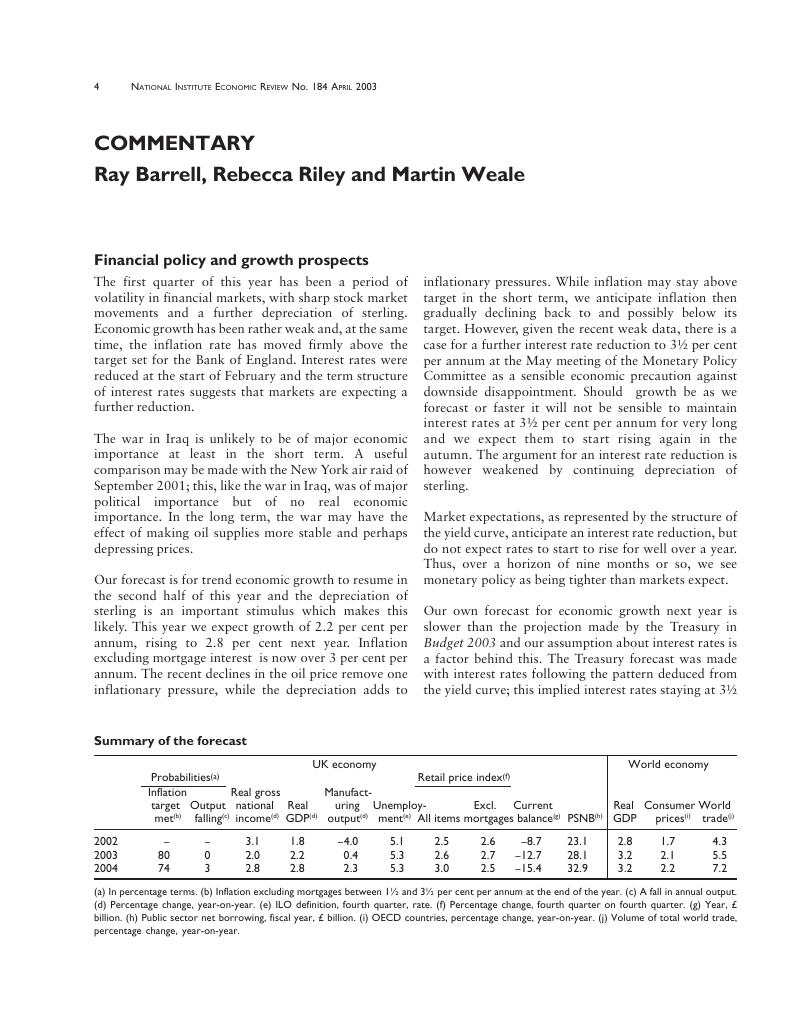No CrossRef data available.
Article contents
Commentary
Published online by Cambridge University Press: 26 March 2020
Abstract
An abstract is not available for this content so a preview has been provided. Please use the Get access link above for information on how to access this content.

- Type
- Articles
- Information
- Copyright
- Copyright © 2003 National Institute of Economic and Social Research
References
Barrell, R. (2002), ‘Equity markets, block realignments and the UK exchange rate’, National Institute Economic Review, 181, pp. 38–43.CrossRefGoogle Scholar
Barrell, R., Gottschalk, S. and Hall, S. (2003), ‘Foreign direct investment and exchange rate uncertainty in imperfectly competitive industries’, NIESR mimeo.Google Scholar
Barrell, R. and Weale, M.R. (2003a), ‘Designing and choosing macroeconomic frameworks: the position of the UK after four years of the euro’, Oxford Review of Economic Policy (forthcoming).Google Scholar
Becker, B. and Hall, S. (2003), ‘Foreign direct investment in industrial research and development and exchange rate uncertainty in the United Kingdom’, NIESR mimeo.Google Scholar
Byrne, J. and Davis, E.P. (2003), ‘Panel estimation of the impact of exchange rate uncertainty on investment in the major industrial countries’, National Institute Discussion Paper No. 208.Google Scholar
Hall, S.G. and Yhap, B. (2003), ‘Measuring the correlation of shocks between the UK and the core of Europe’, National Institute Discussion Paper no. 213.Google Scholar
Massmann, M. and Mitchell, J. (2002), ‘Have UK and Euro Zone business cycles become more correlated?’ National Institute Economic Review, 182, pp. 58–71.CrossRefGoogle Scholar


